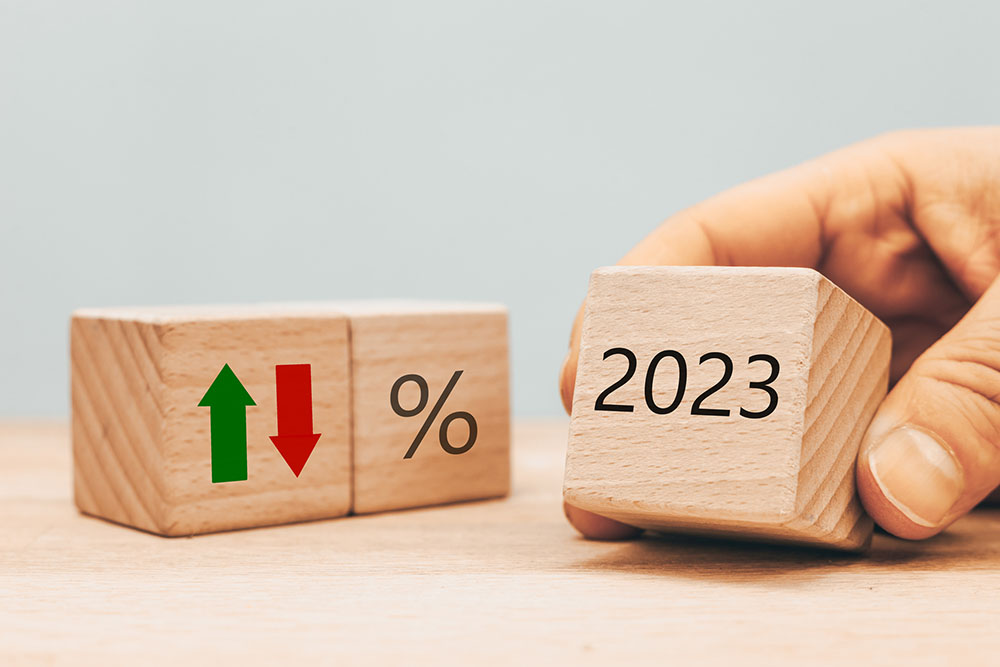Bure Valley Group is an investment introducer platform which links successful investors with exciting, innovative UK startups seeking funding. This content is for information purposes only and should not be taken as financial or investment advice.
UK interest rates have been on quite a journey over the last two years. Starting from a historic low of 0.10% in late 2021, rates were put up 14 times by the Bank of England (BoE) over 2022 and 2023 as the central bank fought soaring inflation (driven by factors such as pent-up consumer demand after the COVID-19 lockdowns, as well as global price volatility for energy and food after Russia invaded Ukraine).
By late 2023, interest rates stood at 5.25% – their highest since the 2008-9 Financial Crisis. This was bad news for many homeowners who saw their monthly mortgage payments rise dramatically, yet some savers benefitted slightly as account rates improved. Looking ahead, investors are asking – where could interest rates go next?
Below, we explore some current trends in the UK economy in November 2023 which bear upon the interest rate landscape. We also offer our thoughts on what these might mean for investors who are planning their portfolios in light of macroeconomic factors like inflation and interest rates. We hope these insights are helpful to you.
To learn more about our EIS projects and other early-stage opportunities, please visit our portfolio page. For enquiries regarding our latest projects and funding, you can reach us via:
+44 160 334 0827
Where could interest rates go next?
At the time of writing, the Consumer Price Index (CPI) fell sharply from 6.7% to 4.6%, leading the UK government to celebrate that it had hit its inflation target early (the Prime Minister had pledged to halve inflation to below 5.4% by the end of 2023).
This quickly caused the FTSE 100 to rise by 1.1% shortly after markets opened. The heightened optimism is largely due to wider expectations that interest rates will fall in 2024. After all, the primary reason to raise interest rates is to try and curb inflation. If the latter is falling, what is the justification for central banks to keep rates high?
The key question, of course, is whether the new CPI figures represent a “blip” in the UK’s inflation journey – or, do they signal a change in direction in overall prices? So far, the BoE has not signalled an intention to imminently lower interest rates. Indeed, at its most recent meeting in early November, the Monetary Policy Committee voted 6-3 to keep rates at 5.25% (despite presumably knowing that there was a good chance the CPI would fall in the coming weeks).
This most recent meeting, coupled with the new CPI figures, suggests that a further base rate increase is less likely than it was a month or so ago. However, nothing is off the table.
What should investors do?
The latest UK inflation statistics should encourage investors to be more optimistic about the economy next year. However, we are not out of the woods yet. Dr Roger Barker, Director at the Institute of Directors, believes that interest rate cuts will still not happen until later in 2024:
“This month’s sharp decline in inflation was already baked into the numbers …The rate of core inflation (excluding food and energy), which fell from 6.1pc to 5.7pc, is still relatively high.”
The UK labour force is still widely regarded as quite “tight” and this adds to inflationary pressure as employers compete for scarce workers (e.g. by offering higher pay). Indeed, UK wage growth has eased slightly in the latest quarter but remains at a near record.
So, investors can reasonably hope that interest rates will not go up further in 2024 (assuming no “big events” such as further global price shocks – e.g. caused by a new/escalating conflict). Yet firms will continue to find it more expensive to finance investment projects using debt compared to the low-interest years leading up to December 2021.
As such, early-stage investors (e.g. angel investors) could present a valuable alternative to growing companies which are seeking funding – yet doors are less open to them from traditional lenders, such as banks. Rather than turning to debt, founders can access finance by offering an equity stake in their business, also benefitting from the mentorship offered by their investors along the way.
Hopefully, if interest rates do fall later in 2024, this will create a buoyant effect on share prices as investors are less attracted to newly issued bonds (which may offer lower yields) and turn back to equity in the hope of achieving higher returns. However, only time will tell if this transpires and whether lower interest rates will, indeed, push up the stock market.
Again, this is where it can be beneficial to have a portion of an investor’s portfolio allotted to early-stage companies – not just publicly traded stocks. Whilst the former is also affected by inflation and interest rates, the values of private businesses do not necessarily follow the FTSE 100 and similar indexes. As such, investing in young, high-growth-potential companies can be a useful diversification tool – especially when faced with uncertainty about interest rates.
Invitation
Interested in finding out more about the exciting startup projects we have on offer to investors here at Bure Valley Group?
Get in touch today to start a conversation with our team and discuss some of the great investment memorandums we have available here:
+44 160 334 0827


